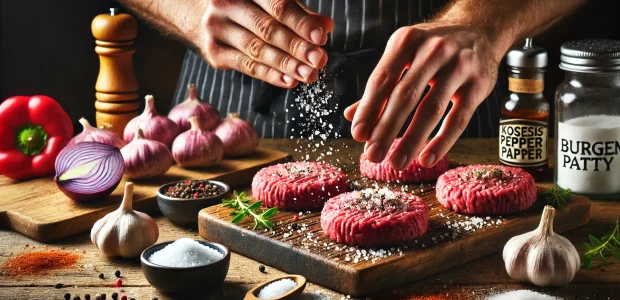Key Takeaways:
- Use 1/2 to 1 tsp kosher salt per pound of ground beef
- Season meat just before cooking, not in advance
- Mix gently to avoid tough, dense burgers
- Add 1-2 tsp Worcestershire sauce for umami depth
- Create a dimple in the center to prevent burger shrinkage
- Test your seasoning on a small patty before cooking all burgers
The secret to an exceptional homemade burger lies not in fancy equipment or expensive ingredients, but in how you season ground beef for burgers. The right seasoning transforms an ordinary patty into a mouthwatering masterpiece that rivals any restaurant offering. Whether you’re a backyard grilling enthusiast or preparing a quick weeknight dinner, understanding the art and science of burger seasoning will elevate your cooking game instantly.
In this comprehensive guide, we’ll explore everything from basic salt and pepper ratios to signature seasoning blends, mixing techniques, and cooking methods that guarantee juicy, flavorful burgers every time. Let’s dive into the world of burger seasonings and discover how simple changes can make remarkable differences in flavor.
Choosing the Right Ground Beef
The Ideal Fat-to-Lean Ratio
Before discussing seasonings, it’s crucial to start with the right foundation. The ideal ground beef for burgers contains an 80/20 ratio—80% lean meat to 20% fat. This balance provides enough fat to keep your burgers juicy and flavorful while cooking, without becoming greasy.
If you opt for leaner blends like 90/10, your burgers may end up drier and less flavorful, requiring more careful cooking and potentially additional seasonings to compensate. Conversely, fattier blends might cause flare-ups on the grill and excessive shrinkage during cooking.
Best Cuts for Burger Perfection
Chuck is widely considered the gold standard for burger meat due to its optimal fat content and rich beef flavor. If grinding your own meat or requesting a custom grind from your butcher, consider these excellent options:
- Chuck: Perfect balance of fat and flavor
- Brisket: Adds a deep beefy flavor
- Short rib: Contributes richness and tenderness
For the absolute best results, use freshly ground beef the same day it’s prepared. If that’s not possible, store properly refrigerated ground beef for no more than 1-2 days before cooking.
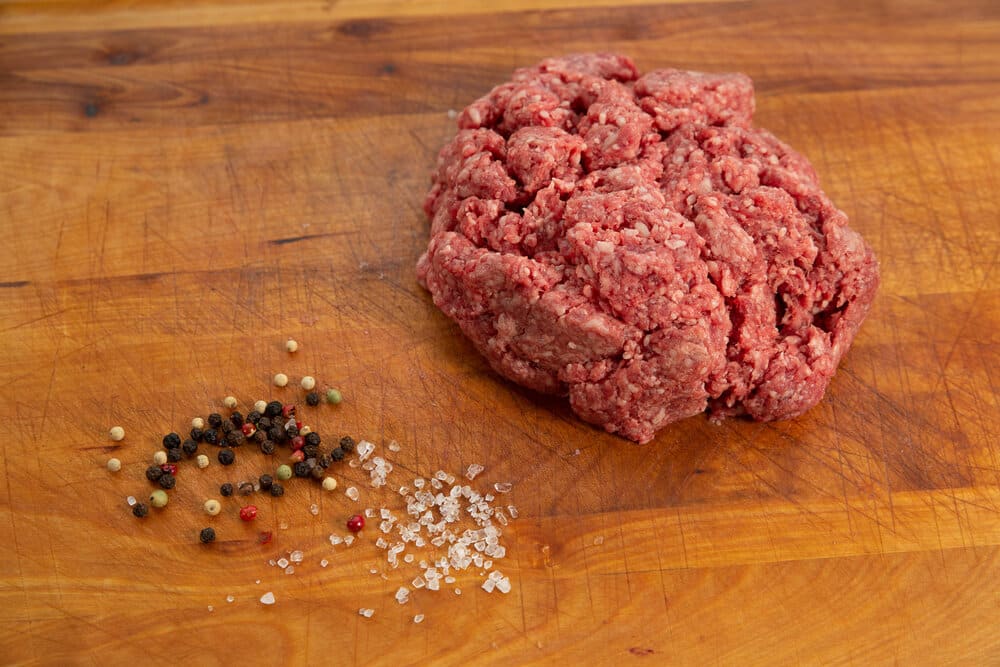
Basic Burger Seasoning: The Foundation
Salt and Pepper: The Essentials
Even the simplest burgers shine with proper salt and pepper application. Here’s the perfect ratio:
- Salt: 1/2 to 1 teaspoon kosher salt per pound (450g) of ground beef
- Black Pepper: 1/2 teaspoon freshly ground black pepper per pound
Pro tip: Use kosher salt rather than table salt. Its larger crystals distribute more evenly and provide better flavor control. Freshly ground black pepper offers significantly more aroma and flavor than pre-ground alternatives.
The timing of when you add salt is crucial. Season your burgers just before cooking—ideally no more than 30 minutes in advance. Salt draws moisture to the surface of the meat; applying it too early can result in dense, tough patties as the proteins break down and recombine.
The Gentle Mixing Technique
When incorporating seasonings, less handling is more. Overworking the meat creates dense, tough burgers by melting the fat and changing the protein structure. Instead:
- Spread the ground beef in a wide bowl
- Sprinkle seasonings evenly across the surface
- Use your fingertips or a fork to gently fold the meat just until seasonings are incorporated
- Stop mixing as soon as the seasoning appears evenly distributed
Your goal is barely mixed meat that holds together, not a homogeneous paste. The result will be a burger with a tender, loose texture that retains juiciness when cooked.
Advanced Burger Seasonings
Enhancing Flavors: Garlic, Onion and Herbs
Beyond salt and pepper, these additions create depth and complexity:
- Garlic Powder: 1/4 to 1/2 teaspoon per pound adds savory depth without the texture issues of fresh garlic
- Onion Powder: 1/4 to 1/2 teaspoon per pound provides sweet, aromatic notes
- Paprika: 1/4 teaspoon per pound adds color and mild sweetness (use smoked paprika for a BBQ flavor profile)
- Dried Herbs: 1/4 to 1/2 teaspoon of thyme, oregano, or parsley per pound works well for subtle herbal notes
Fresh vs. dried ingredients: While fresh garlic and onions pack more flavor, they introduce moisture and can create texture problems. Powdered versions provide flavor without compromising burger texture.
Adding Depth: Worcestershire Sauce and Other Umami Boosters
These liquid additions provide the “fifth taste” of umami that makes burgers irresistible:
- Worcestershire Sauce: 1-2 teaspoons per pound enhances beefy flavor with its complex blend of fermented anchovies, molasses, vinegar, and spices
- Soy Sauce: 1 teaspoon per pound (as an alternative to Worcestershire) adds savory depth
- Dry Mustard Powder: 1/4 teaspoon per pound provides subtle tanginess and enhances other flavors
- Mushroom Powder: 1/4 teaspoon per pound intensifies the umami factor
When using liquid additions, keep them minimal to avoid wet, soggy burgers. One to two teaspoons total liquid per pound of meat should be your maximum.
The Perfect Burger Seasoning Technique
When to Season Your Burger Meat
The debate over when to season burger meat has a clear scientific answer. For optimal texture:
- Best approach: Season just before cooking (immediately or up to 30 minutes before)
- Why it matters: Salt begins breaking down meat proteins immediately, potentially creating a denser, sausage-like texture when applied too early
- Temperature consideration: Remove meat from refrigeration 15-20 minutes before cooking to take the chill off, then season right before cooking
If you must prepare ahead of time, shape the patties unseasoned, refrigerate them, and apply salt and pepper just before they hit the heat.
Mixing vs. Surface Seasoning Methods
You have two main options for applying seasonings:
Method 1: Mix throughout the meat
- Best for: Complex seasoning blends and even distribution
- Technique: Gently fold seasonings into the meat
- Advantage: Consistent flavor throughout every bite
Method 2: Season the exterior only
- Best for: Highlighting the natural beef flavor with a seasoned crust
- Technique: Form patties first, then generously season both sides
- Advantage: Creates a flavorful crust while maintaining pure beef flavor inside
Many professional chefs prefer the exterior-only approach for its superior crust development and preservation of the meat’s natural flavor. However, for flavor-packed specialty burgers, the mix-in method ensures seasoning in every bite.
Proper Seasoning Ratios By Weight
For consistent results, measure seasonings by weight rather than volume, especially when making larger batches:
| Amount of Ground Beef | Salt | Black Pepper | Garlic Powder | Onion Powder | Worcestershire |
|---|---|---|---|---|---|
| 1 lb (450g) | 1/2-1 tsp | 1/2 tsp | 1/4-1/2 tsp | 1/4-1/2 tsp | 1-2 tsp |
| 2 lbs (900g) | 1-2 tsp | 1 tsp | 1/2-1 tsp | 1/2-1 tsp | 2-4 tsp |
| 5 lbs (2.25kg) | 2.5-5 tsp | 2.5 tsp | 1.25-2.5 tsp | 1.25-2.5 tsp | 5-10 tsp |
Taste-testing technique: To verify your seasoning level before cooking all your patties, create a small test patty (about the size of a half-dollar) and quickly cook it in a hot pan. Adjust seasonings based on this sample before cooking the remaining burgers.
4 Signature Burger Seasoning Recipes
Classic American Burger Blend
Simple but perfect for letting quality beef shine:
Ingredients (per pound/450g of beef):
- 3/4 teaspoon kosher salt
- 1/2 teaspoon freshly ground black pepper
- 1/2 teaspoon garlic powder
- 1 teaspoon Worcestershire sauce
Mixing instructions: Sprinkle dry ingredients evenly over meat, drizzle with Worcestershire sauce, and gently fold just until incorporated.
Flavor profile: Savory, balanced flavor that enhances rather than masks the beef’s natural taste.
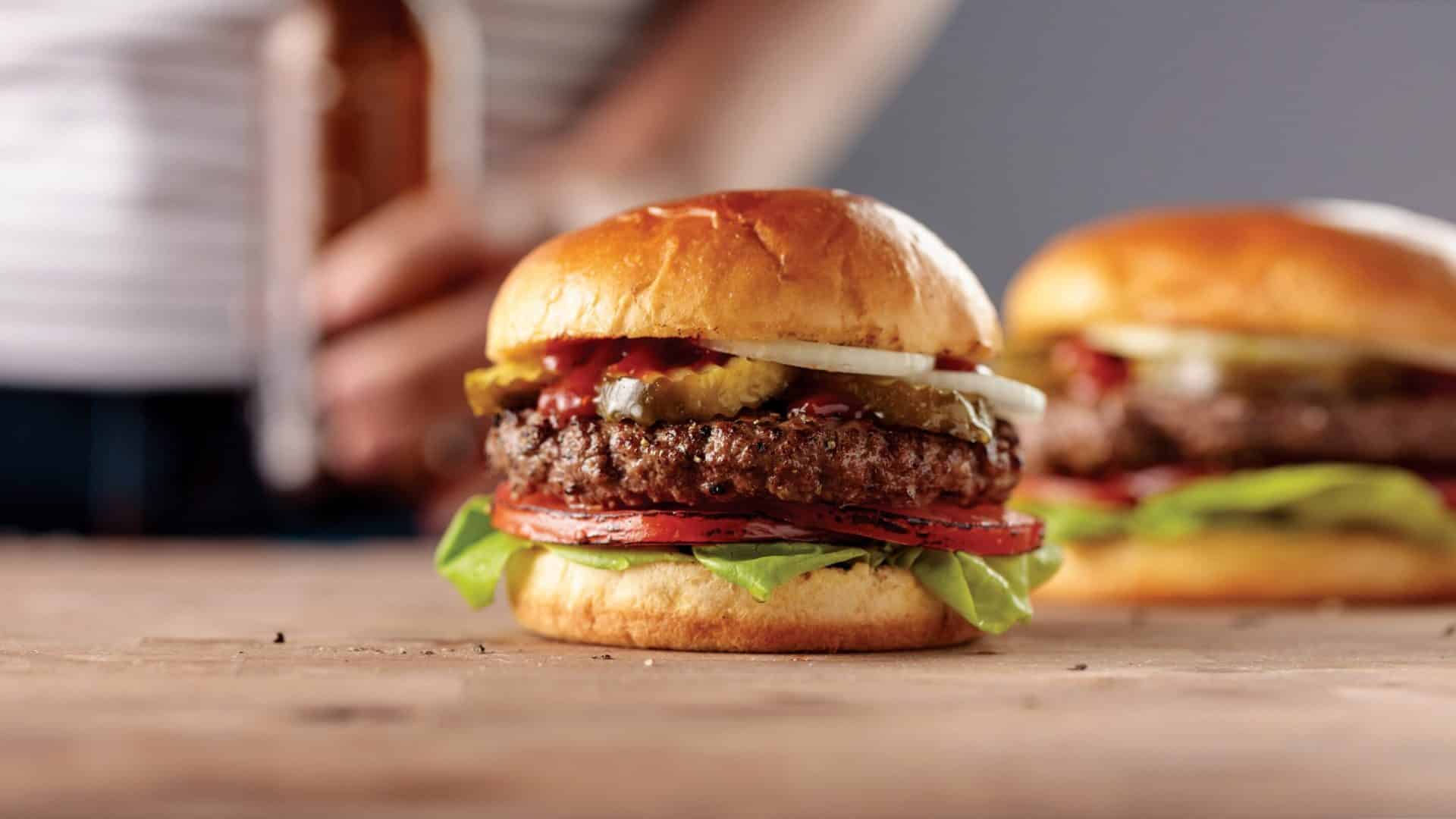
Steakhouse-Style Burger Seasoning
Recreates the robust flavor of high-end restaurant burgers:
Ingredients (per pound/450g of beef):
- 3/4 teaspoon kosher salt
- 1/2 teaspoon freshly ground black pepper
- 1/2 teaspoon garlic powder
- 1/4 teaspoon onion powder
- 1/4 teaspoon dry mustard powder
- 1/4 teaspoon dried thyme
- 1 teaspoon Worcestershire sauce
Mixing instructions: Combine all dry ingredients in a small bowl first, then sprinkle over meat along with Worcestershire sauce. Mix gently.
Flavor profile: Rich, complex flavor with herbal notes and enhanced beefiness.
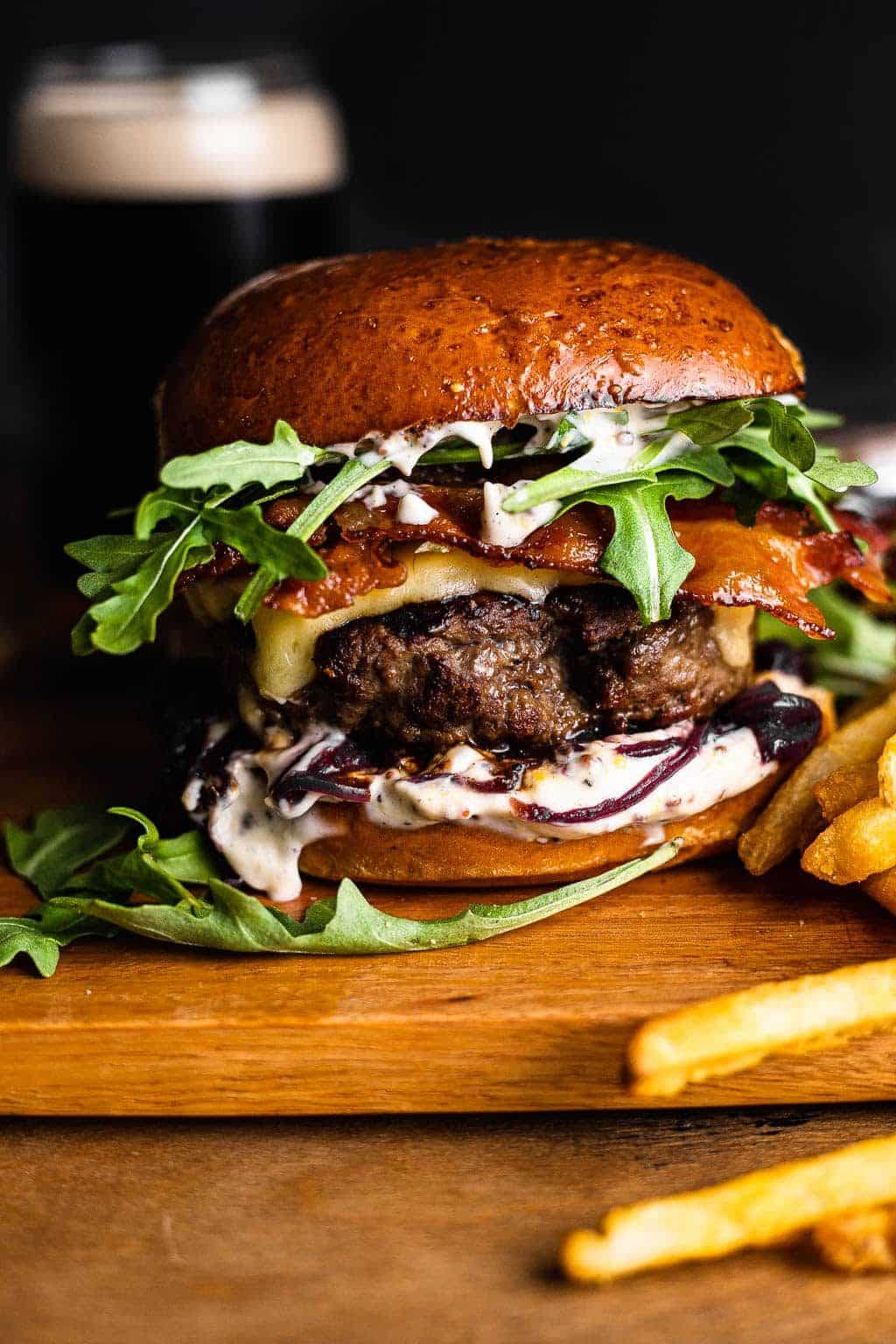
Mexican-Inspired Spice Blend
Adds a southwestern kick to your burgers:
Ingredients (per pound/450g of beef):
- 3/4 teaspoon kosher salt
- 1/2 teaspoon freshly ground black pepper
- 1 teaspoon chili powder
- 1/2 teaspoon ground cumin
- 1/4 teaspoon garlic powder
- 1/4 teaspoon onion powder
- 1/8 teaspoon cayenne pepper (adjust to taste)
- 1/4 teaspoon dried oregano
Mixing instructions: Combine all spices thoroughly before adding to meat to ensure even distribution.
Flavor profile: Earthy, warm, and mildly spicy with aromatic depth.
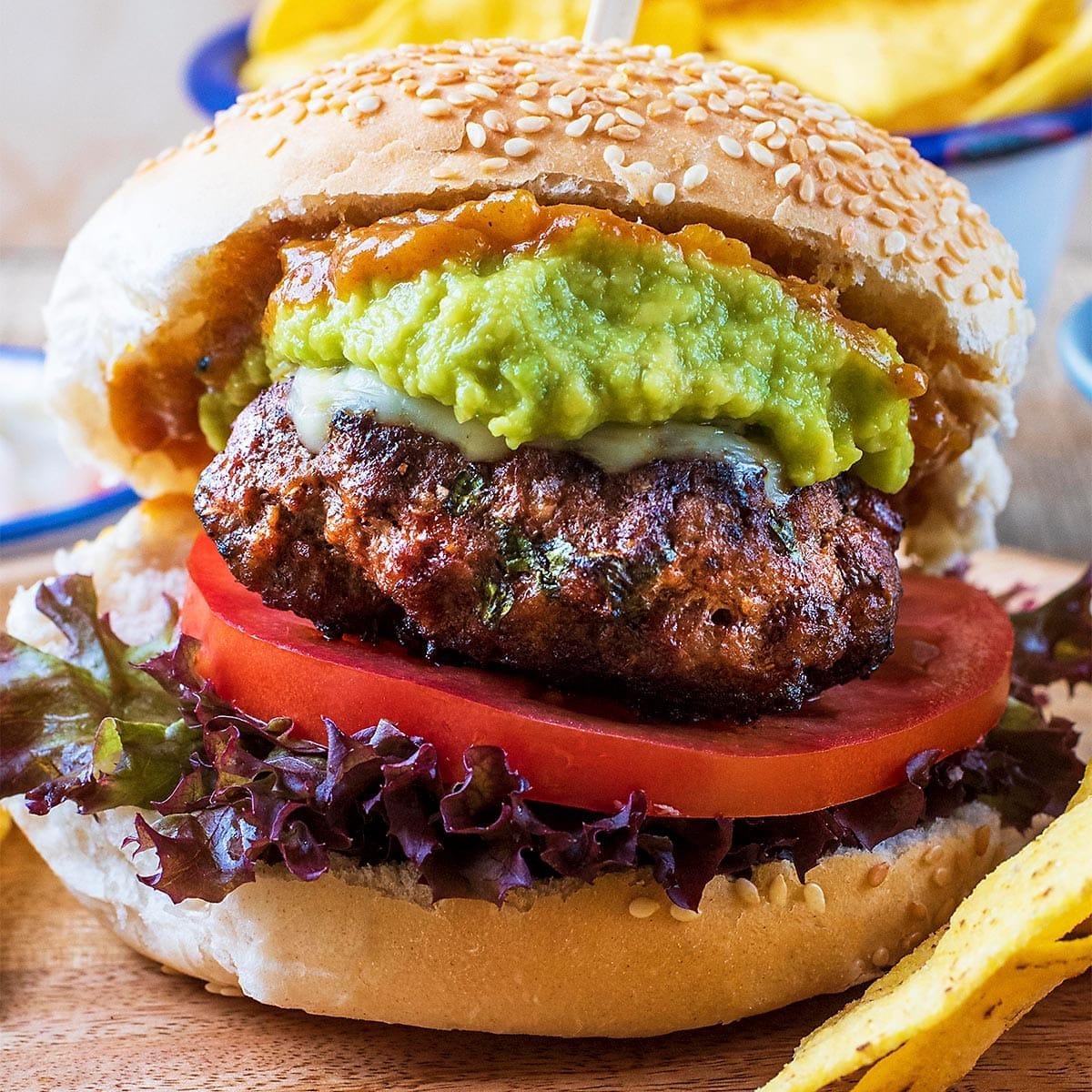
Smoky BBQ Burger Seasoning
Perfect for summer grilling:
Ingredients (per pound/450g of beef):
- 3/4 teaspoon kosher salt
- 1/2 teaspoon freshly ground black pepper
- 1/2 teaspoon smoked paprika
- 1/2 teaspoon onion powder
- 1/4 teaspoon garlic powder
- 1 teaspoon brown sugar
- 1/4 teaspoon ground mustard
Mixing instructions: Ensure brown sugar has no lumps before combining with other spices. Mix thoroughly with meat.
Flavor profile: Sweet, smoky flavor with a hint of molasses depth.
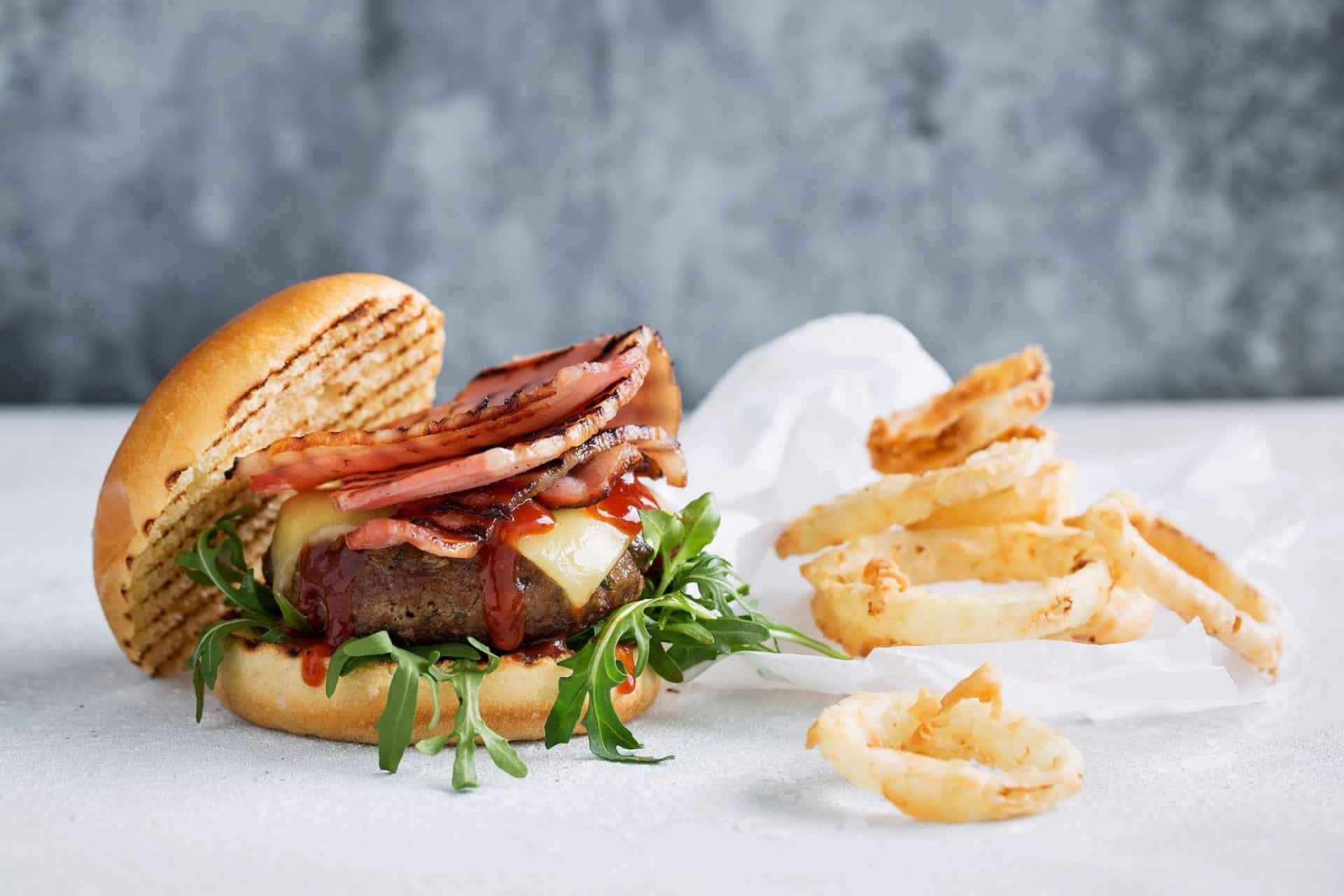
Shaping and Preparing Your Seasoned Patties
The Perfect Patty Shape
After seasoning, proper patty formation is crucial:
- Divide meat into equal portions (about 4-6 oz/115-170g per patty)
- Form into balls, then gently press to 1.5-2cm (about 3/4 inch) thickness
- Create a slight dimple in the center with your thumb
- Make the patties about 1 inch wider than your buns (they’ll shrink during cooking)
The dimple technique: Creating an indentation in the center prevents burgers from puffing up into meatballs during cooking. As the edges contract, the center fills in, resulting in perfectly flat patties.
Avoid pressing or compacting the meat too firmly, which creates dense, tough burgers. The patties should hold together but maintain a loose texture.
Pre-Cooking Considerations
Set yourself up for success with these final preparation steps:
- Allow shaped patties to rest at room temperature for 15-20 minutes before cooking
- This takes the chill off and promotes even cooking
- If you seasoned the exterior only, this is when you’d apply salt and pepper
- Prepare your cooking surface—preheat the grill or pan thoroughly before adding burgers
Cooking Your Perfectly Seasoned Burgers
Grilling Method
For that classic burger flavor with perfect char:
- Preheat grill to medium-high heat (375-400°F/190-200°C)
- Oil grates lightly to prevent sticking
- Cook patties for 4-5 minutes per side for medium doneness
- Resist the urge to press down on burgers while cooking—this squeezes out valuable juices
- Only flip once for the best crust development
- For cheeseburgers, add cheese during the final minute of cooking
The ideal internal temperature for food safety is 160°F (71°C), though many prefer medium doneness at 145-155°F (63-68°C).
Stovetop Cast Iron Method
For times when grilling isn’t an option:
- Heat a cast-iron skillet over medium-high heat until very hot
- Add a small amount of high-heat oil or butter (about 1 tablespoon)
- Place patties in the pan, being careful not to overcrowd
- Cook for 3-4 minutes on the first side until a deep brown crust forms
- Flip once and cook for an additional 3-4 minutes
- Consider covering the pan briefly for the last minute to melt cheese thoroughly
This method creates an exceptional crust through direct heat contact, often rivaling or exceeding grill results.
Common Burger Seasoning Mistakes to Avoid
Over-handling the Meat
Signs you’re working the meat too much include:
- Sticky, paste-like texture
- Smooth appearance rather than a natural, rough texture
- Burgers that shrink excessively when cooked
- Dense, tough results
Solution: Use cold hands and minimal mixing movements. Stop as soon as seasonings are incorporated.
Seasoning Too Early or Too Late
Timing matters significantly:
- Too early: Salt applied hours in advance creates dense, tough burgers
- Too late: Seasoning after cooking means flavors sit on the surface without penetrating
Rescue tip: If you over-salt your mix, add a small amount of additional unseasoned ground beef and gently incorporate it to dilute the seasoning.
FAQs
Conclusion
Learning how to season ground beef for burgers properly is a game-changing skill that elevates everyday meals into memorable dining experiences. The balance of quality ingredients, proper technique, and perfect timing makes all the difference between an ordinary burger and an extraordinary one.
Remember these key principles: choose the right meat, use measured seasonings, handle gently, and cook with care. Whether you prefer the classic American style or want to experiment with more adventurous flavor profiles, these techniques provide the foundation for burger mastery.
Try these seasoning methods tonight and discover just how impressive a homemade burger can be. With practice, you’ll develop your signature blend that friends and family will request time and again. Happy cooking!
Read more:
- Furikake Seasoning: The Ultimate Guide to Japan’s Rice Topping
- Best All-Purpose Seasonings of 2025: Top 10 Flavor Enhancers Ranked
- Best Seasoning for Roasted Sweet Potatoes: Top 10 Store-Bought Blends
- Spices That Boost Metabolism: 7 Natural Ways to Burn Calories
- Is Furikake Healthy? The Truth About This Japanese Condiment

